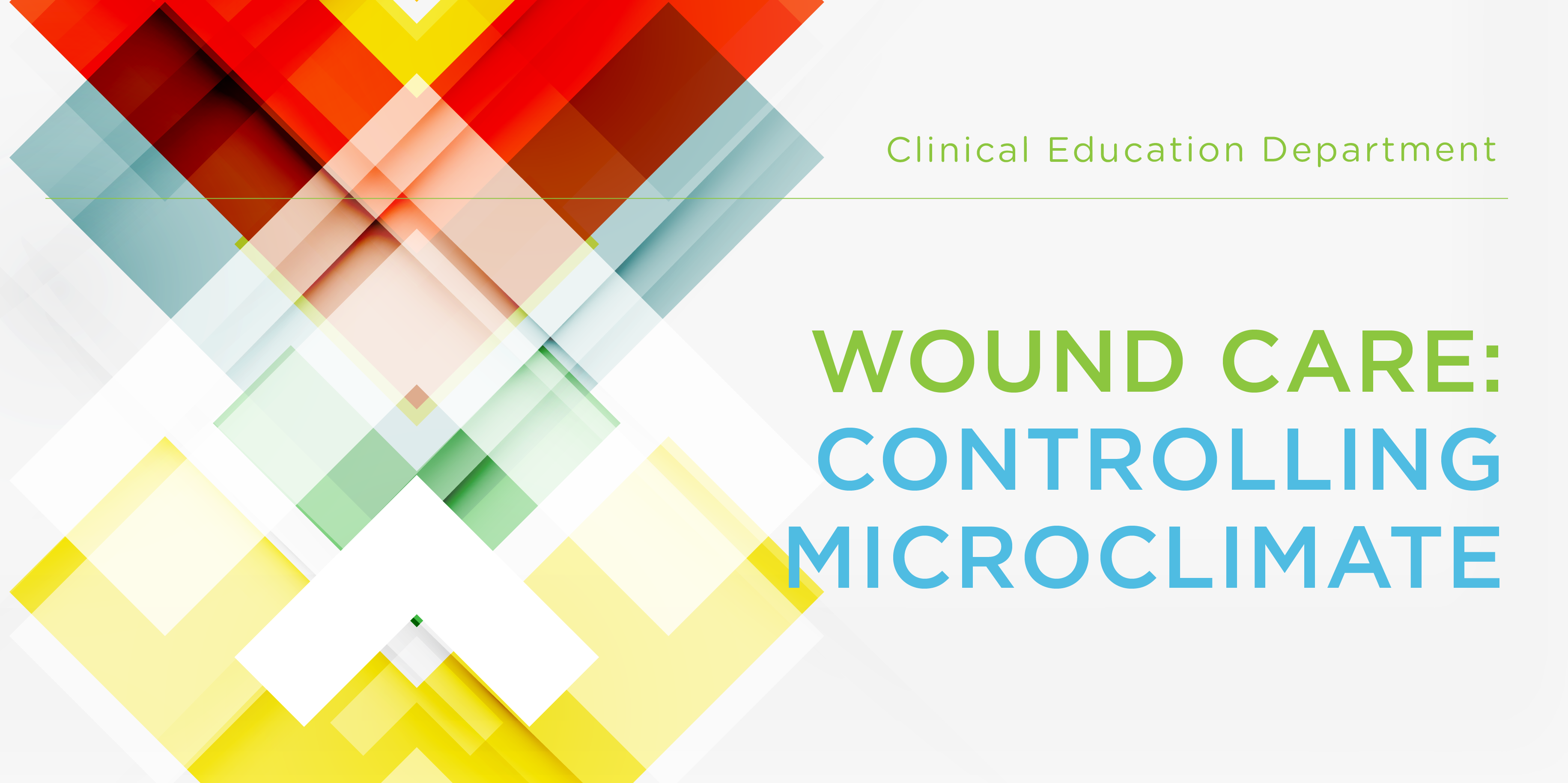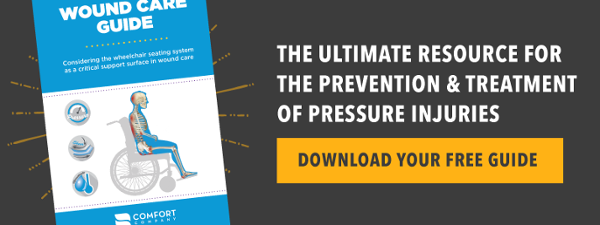Controlling MICROCLIMATE is very important in the prevention and during the healing phase of a wound. Now that we understand how it is created, we can learn how to PREVENT it. This week I am going to introduce you to some simple treatment tips and products that will help reduce the risk of creating a microclimate on the seating surface.
As therapists, we not only are responsible for providing amazing products to prevent and treat wounds but sometimes it is necessary to look at the resident’s ADL routine. Maybe we need to tweak the hygiene practices going on by the resident or caregivers to ensure we are not promoting the microclimate that we are trying so desperately to avoid!
![]()
Here are some helpful tips to keep in mind during patient care that should be shared with the resident, family and nursing staff:
- Make a strict toileting schedule to minimize the negative effects of incontinence
- Avoid using hot water and harsh soaps when performing hygiene on a resident
- Apply skin barrier creams in sensitive areas
- Apply dressings to manage drainage from wounds
- Maintain a mild climate in the environment by avoiding excessive heat and humidity
- Wear breathable clothing and change briefs regularly
Microclimate is controlled at the SEAT SURFACE! We HAVE to be familiar with PRODUCTS out there that help to avoid microclimates when choosing the appropriate sitting surface. We NEED to provide a seat surface that:
- Is moisture and air permeable
- WILL NOT lock moisture in that can soften and macerate the skin, making it more vulnerable to pressure and friction
Certain mediums of cushion are more permeable than others. Consider the material the cushion is made of when selecting a cushion. Consider what material traps heat and moisture in and what material is designed to dissipate heat and allow air flow to prevent heat and moisture build up. Look for descriptors when choosing a cushion that will fight microclimate such as:
- Dissipates heat
- Air and moisture permeable
- Breathable
- High thermal conductivity (heat will flow through quickly)
- Moisture wicking
- Temperature regulation
- Air flow
Comfort Company takes microclimate into consideration when choosing cushion mediums and also has a variety of products that are added to our cushions to take the fight against microclimate one step further:

- GlideWear™ which is made with 100% breathable material to control microclimate at the cushion surface
- Mesh Liners in the X series of cushions which provide the cushion with a breathable mesh that promotes airflow, and breathability of the cushion cover. They can be washed in any commercial washing machine on hot or cold setting
- Incontinence Liners that protect the integrity of the cushion and prevent moisture from being trapped in the cushion. Without an incontinence liner, it would be like sitting on a sponge, and that trapped moisture would be constantly against the skin
Look for a cover options, like the ones offered by Comfort Company, that are:
- Low maintenance
- Incontinent proof
- Dissipate heat to prevent that microclimate from forming
BOTH of Comfort Company’s cover options are available with GlideWear™ that fights the dreaded shear element as well as microclimate:
- Comfort Tek- incontinent cover that is easily cleaned. Wipe away surface
- Stretch Air- breathable for heat dissipation and has a waterproof polyurethane barrier for incontinence protection
Hopefully after this series of blogs on the EXTRINSIC FACTORS of wound development, PRESSURE, SHEAR and MICROCLIMATE and how to fight against each, you understand that we fight:
- Pressure with the geometry of the cushion through the contours talked about in previous blogs
- Shear through GlideWear™ and in conjunction with the proper contours to maintain the pelvis in good alignment
- Microclimate at the seat surface through proper hygiene practices and the products available on the market listed above
Now you have all the tools to fight skin breakdown and wound development as the therapist. Go forward with confidence to pick up those referrals that are at risk or already have a wound, knowing that you now have the knowledge necessary to make a difference!

Ana Endsjo, MOTR/L, CLT
Clinical Education Manager LTC Division
Ana Endsjo has worked as an occupational therapist since 2001 in a variety of treatment settings. She has mainly worked with the geriatric population, dedicated to the betterment of the treatment of the elderly in LTC centers. Her focus has been on seating and positioning and contracture management of the nursing home resident. With this experience, her hope is to guide other therapists, rehab directors, nurses, and administrators through educational guides, blogs, webinars, and live courses in her role as Clinical Education Manager for the long term care division.

